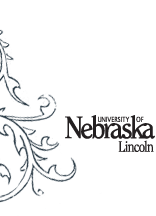Thomas K. Murphy, A Land Without Castles: The Changing Image of America in Europe, 1780-1830from Chapter 4, "Symbols of America in Europe" (2001)
Transcribed from pages 88-89 of Thomas K. Murphy's A Land Without Castles: The Changing Image of America in Europe, 1780-1830. Published by Lexington Books, 2001.
George Washington played a unique role in developing the image of America, standing as a mythic figure, a sage and a resolute military and civilian leader who had brought about and then preserved the liberty of the United States. Washington commanded a degree of respect in European literature unmatched even by Jefferson and Franklin. More typical are the comments by Benjamin La Trobe, an Englishman later to become the first architect of the U.S. Capitol building, who described Washington as having "something uncommonly majestic in his walk, his address, his figure and his countenance." Washington stood in a category of his own, as perhaps the symbol of the recent success of the colonies. David D'Angers articulated this very well when he exclaimed that "France admires the glory, that of the conquest on your soil of America—next to the immortal Washington, and for the defense of your noble rights." In an influential work, Voyage en Amerique, François-René de Chateaubriand described meeting with Washington in the United States. The meeting took place in Philadelphia, and Chateaubriand, because of scheduling difficulties, was forced to wait fifteen days after his arrival for the meeting. His first observation upon meeting the American president was to comment on his simplicity: "When I went to carry my letter of recommendation to this great man, I discovered the simplicity of an old Roman." Thus Washington's image (as personified by character and demeanor) was, as with Franklin, naturally disposed to the cult of simplicity prevalent during the French Revolution.





 Coins
Coins Commentary
Commentary Fiction
Fiction Historical documents
Historical documents Illustrations &
Cartoons
Illustrations &
Cartoons Paintings
Paintings Poetry
Poetry Sculpture
Sculpture Seals
Seals